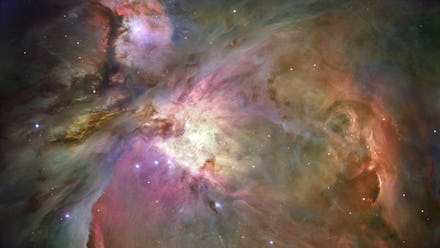Scientists Found a Molecule in Space That Could Help Us Figure Out the Origins of Life

Scientists just found something in space that could explain how the molecules that gave rise to life on Earth first formed.
What they spotted is called a chiral molecule, and it's the first one ever found in space.
Chiral molecules are molecules that come in two different flavors that are chemically the same but structurally are mirror images of each other. Scientists refer to theses molecules as being left-handed or right-handed.
Often we find the chiral molecules on Earth have evolved to be mostly right-handed or left-handed. This is called homochirality, according to Science Magazine. For example, all the amino acids in living organisms on Earth are left-handed. Some scientists think this may have happened because left-handed amino acids were the first to incorporate themselves into the first life forms. So right-handed molecules became essentially useless. But the bottom line is we don't know how homochirality came to be on Earth.
Why it matters that we found a chiral molecule in space: Astronomers found a molecule called propylene oxide inside a distant gas cloud 28,000 light-years away. On Earth, propylene oxide is an ingredient in a type of plastic.
We can't tell yet whether the propylene oxide in the cloud is left-handed or right-handed, but with future studies, we might be able to tell if there are more right-handed than left-handed molecules in the cloud. That could help scientists figure out why homochirality exists on Earth. We'll be able to determine whether molecules get skewed in one direction while they're first forming in space, or later on when life starts to arise.